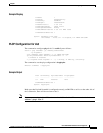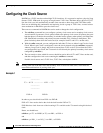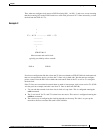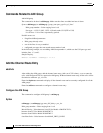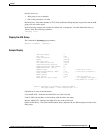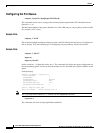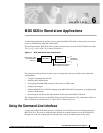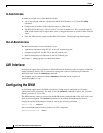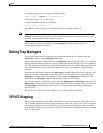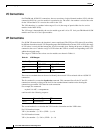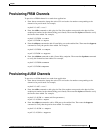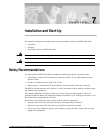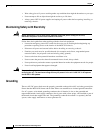
CHAPTER
6-1
Cisco MGX 8220 Installation and Configuration
Release 5.0, Part Number 78-6430-03 Rev. D0, November 2003
6
MGX 8220 in Stand-alone Applications
A stand-alone application is defined as one in which the MGX 8220 shelf is connected to some device
(router or ATM switch) other than a BPX 8620.
The interface between MGX 8220 shelf and the connected device must be ATM UNI/NNI over either
T3, E3, nxT1, nxE1, or OC-3c as shown in Figure 6-1.
Figure 6-1 MGX 8220 Stand-alone Configuration
This chapter provides guidance in those areas of configuration that are peculiar to the stand-alone
configurations.
• Using the command-line interface
• Disabling the ILMI interface
• Configuring the BNM ATM interface to the router or ATM switch
• Setting trap managers
• Understanding DLCI to VPI/VCI mapping in the MGX 8220 shelf (for purposes of configuring the
router or ATM switch)
• Provisioning Frame Relay and other channels in the stand-alone MGX 8220 shelf.
This chapter makes reference to the MGX 8220 command-line interface (CLI) commands. Details of
these commands are found in the Cisco MGX 8220 Command Reference.
Using the Command-Line Interface
A stand-alone MGX 8220 shelf cannot be configured from CWM and must be configured using the
MGX 8220 CLI. This may be achieved either through an in-band connection over the ATM link, or
through one of the out-of-band options (maintenance, control, or Ethernet ports on the ASC).
Frame Relay, ATM
Circuit Emulation
SNA, etc.
MGX 8220
Router or
ATM switch
ATM UNI/NNI over T3, E3 or
OC-3c feeder connection
Broadband
ATM service
11957



